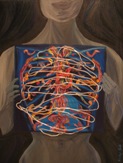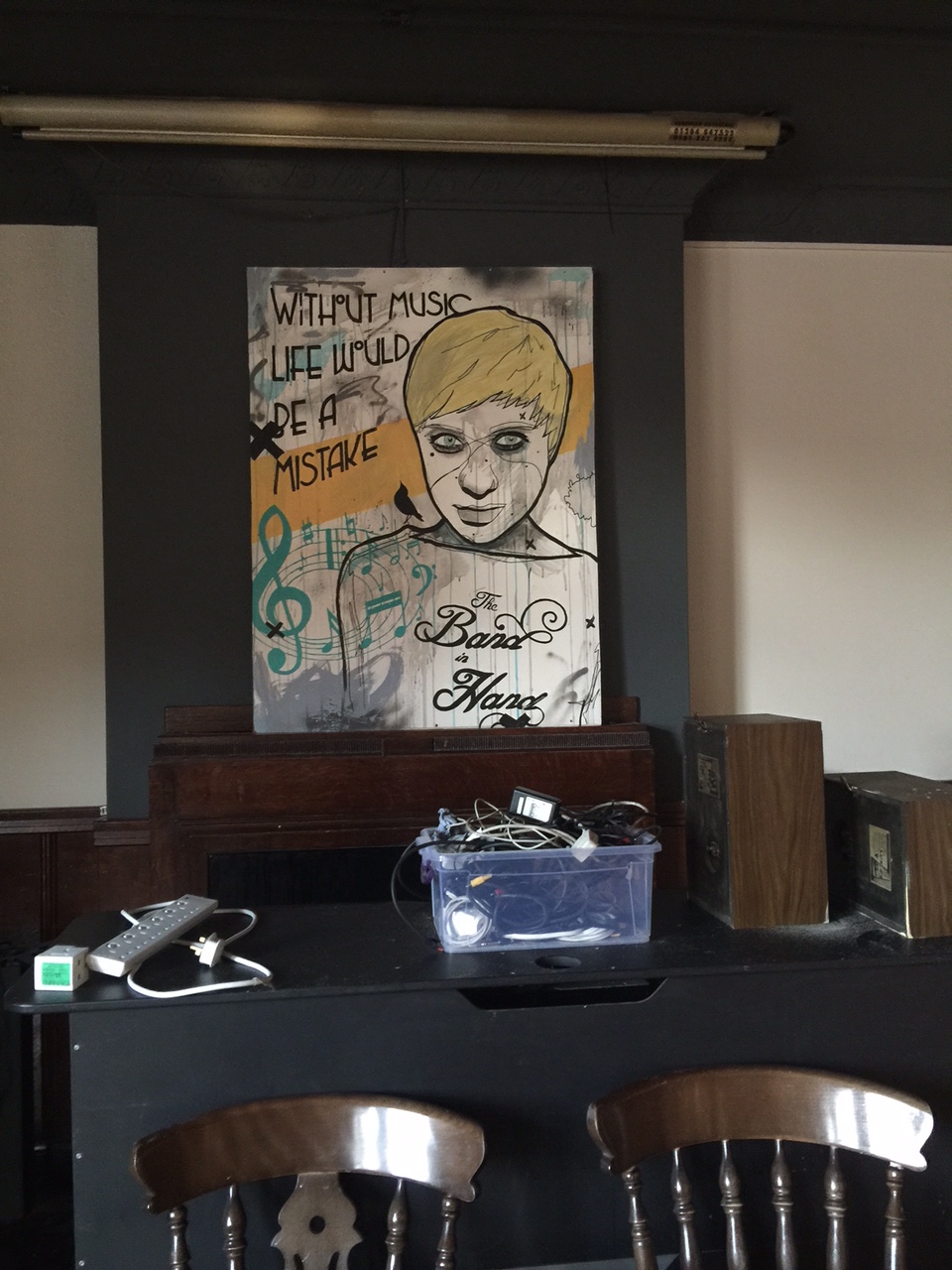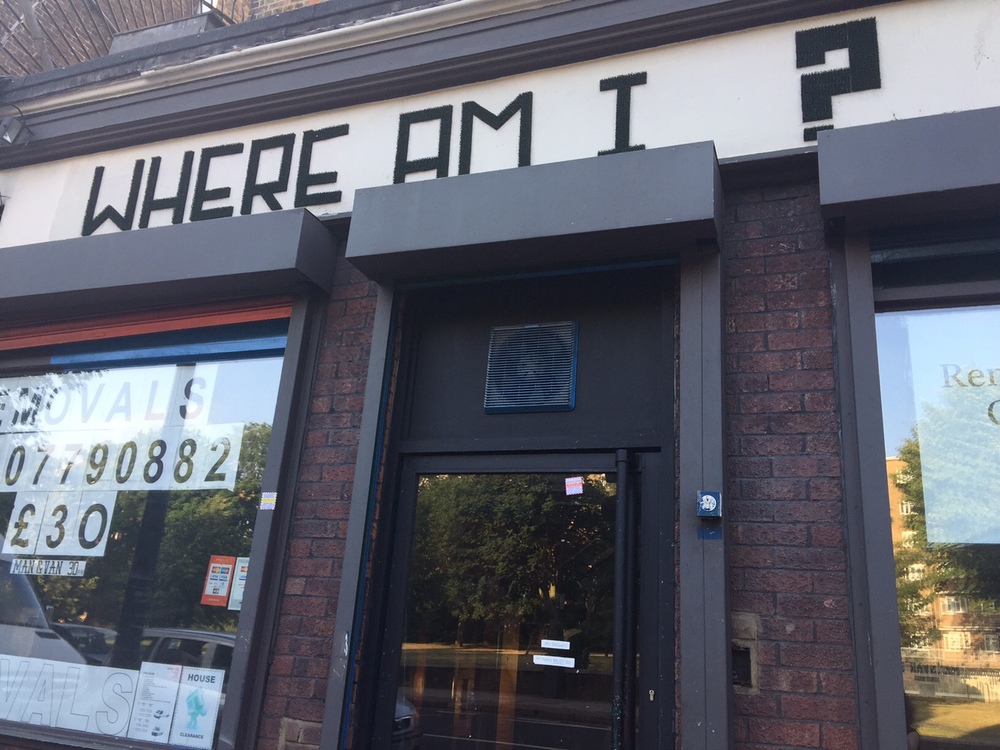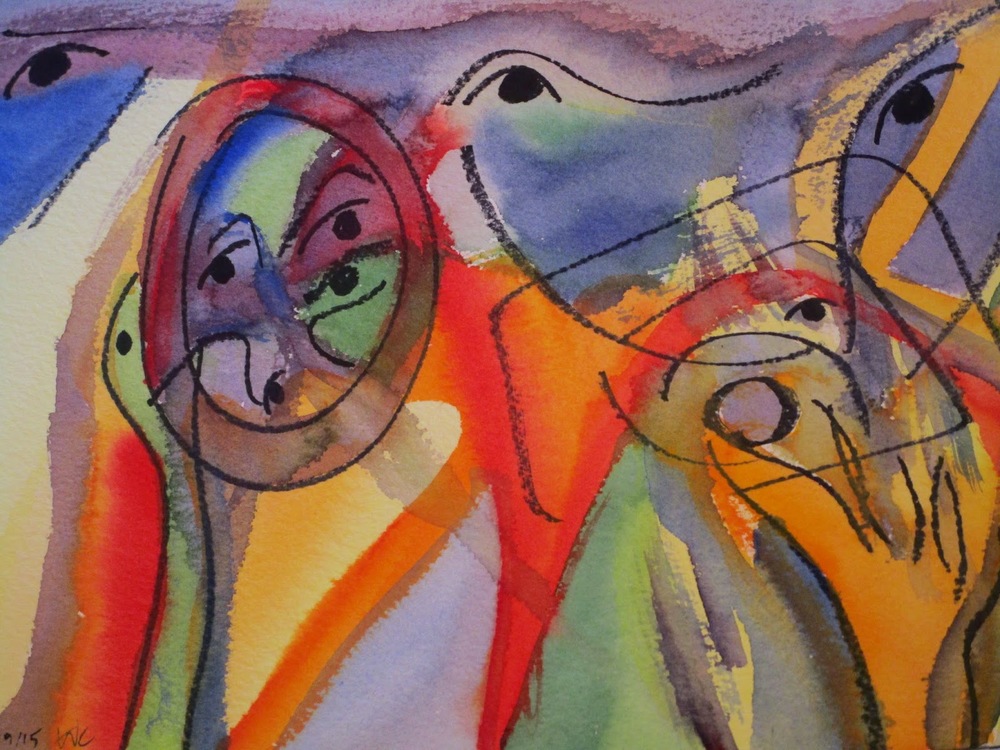
Slowly, a subconscious synthesis grows. I see pictures. I draw them. I paint them. I write. A lot. I sing. Softly. Sometimes, I say a bit. Then a bit more. Until, when I try to talk about what I’m doing next, instead of looking puzzled—people start to get excited, animated, smile or look dumbfounded—and tell me they think it’s a great idea. This happened with my dissertation. (Some of the oil paintings—and the eventual haiku summary—ended up in the UVA Library copy, available on my LinkedIn profile. Some are on display in that same library.) I like to think it’s happening again now.
But I’m still not sure I know what my next project is well enough to have these very conversations. Which is exactly when they’re most important. So I‘m having lots of them at the Centre for Investigative Journalism Summer 2015 conference. I found out about the conference the night before it started, at a Cryptoparty before a poetry, more poetry, and music open mic. God bless London.

That was a very fast and indirect plug for my first original poetry performance—which was not much of a performance—and my singing, which was neither properly prepared nor recorded full through. I’ll have to critique and take down those videos soon. I really just made them to get a baseline to get better. Hard but essential to look at oneself with that kind of hopeful detachment. This is a tangent.
Wandering Not Lost

But not.
It’s all about showing up to the process where you are, so you can take it forward. Identifying and expression desires in order to better hone them into timetabled goals with means-specific plans to try, adapt, try again. And yet, needing to hone the same desires it’s a struggle just to express. The freedom of expression. The constriction of honing and concrete planning. Big soul. Small steps. Big ideas. Small voice. The tension.
Sometimes, talking with the right people—usually accidentally, through the magic of elective affinities, positive selective attention, and dumb luck—eases that tension. For example, talking with Charlie Glass helped me see that I have a very specific public art installation idea he and his collaborators at Anything to Say might be interested in working with me on, or know someone who is.
Interactive Public Art Installation Idea
“They suddenly recognize that God is a living, personal presence, not a piece of chiseled stone. And when God is personally present, a living Spirit, that old, constricting legislation is recognized as obsolete. We’re free of it!”—2 Corinthians 3:17, MSG
“Thou Shalt” is a sculpture highlighting the power of positive selective attention and the conceptual linkages between freedom of conscience and freedom of expression. It’s a huge stone tablet that looks like one of the contentious Ten Commandments monuments in the US. But instead of Thou Shalt Nots, the tablet is full of Thou Shalts. And the spaces after the 10 Thou Shalts are blank. The tablet is made of or those spaces are painted with a chalkboard material, and chalk is available. So people can interact with the installation in celebration of their dreams.
Technology Combats Racial Bias in Diagnosis Idea
And then sometimes, I think about how I still haven’t written an executive summary of how my dissertation research showed medical diagnosis decision support tools might help combat racial bias in diagnosis. This for a company that gave me free research access to their amazing tool. A tool I found playing around on a computer in the med school library when my mom was really sick. A tool that helped me diagnose her (insofar as a teenager can do that), look up patient support groups for her rare disease, and find a doctor they recommended who could stabilize her.
Too Many Ideas Idea
This might seem like a problem of rational prioritization in the sense of needing to manage time better, do more work and less play, or otherwise act like a grown-up instead of not knowing or caring where I’m sleeping tonight. But it’s actually another Mona Lisa smile problem in cognitive terms.
Pascal and other creative problem-solvers found that working on different problems in different places from their priority problems in familiar places helped them make breakthrough connections. I didn’t even realize the potential importance of some of my dissertation research findings until now, years after I collected the medical diagnosis decision support tool data. Only now would talking with the right folks help me summarize it in a way that might be useful. Now I have to think who the right folks are, make the findings accessible to them in haiku summary form, and reshape the write-up for the right audience(s) if I want to share it with the world. Seems kinda important. But I have lots of other important stuff to do. And then the occasional urgent issue to address, like where I’m sleeping any given night.
Attention
Everyone makes attentional choices all the time. It’s the only way we make sense of the world, is to pick out a signal in the noise. I keep talking, thinking, and writing about this, because learning how to do it better has changed my life. It’s like I finally realized I’m a radio. I can tune myself to the signal I want to pick out in the noise. The tuning is the ideas in my head. The noise is the whole, wide world of stimuli and possibilities. And the signal is what I pick out through selective attention—how my ideas shape my perceptions and behaviors, and in turn reality, creating self-fulfilling prophecies.

So. Here is one step forward towards a written articulation of my next priority project.
Portraits of Peace: Celebrating Life in the Global Refugee Crisis
In the global refugee crisis of over 50 million persons displaced due to political violence or instability—the largest number since World War II—people are starting over. They’re choosing to live not like refugees—unmoored people who have lost everything, victims of circumstance, lucky people in an unlucky world—but like ordinary people with extraordinary hopes and dreams. These are their stories.
This is where I launch into sample stories the portfolio of samples of Portraits of Peace that I haven’t created yet.
These are the things of value the series offers:
– Meta: Positive selective attention focus. Drawing attentional resources to a negative crisis in a positive way, so people don’t look away, have empathy fatigue, or get discouraged. Instead they can learn more about the crisis while gaining hope.
– Goods: Portraits of refugees. I’ve exhibited paintings in dozens of venues. I want to be drawing people’s souls shining through their faces, painting the spirit of places where people find peace in motion, adventure, adaptation.
– Services: Teaching refugees. I’ve taught children’s dance, art, drama, music, reading, and more. Also college-level political theory, public opinion, political behavior. It’s not my calling, but I could probably also be of service in this way in the course of traveling around learning from refugees. Learning should always be reciprocal… I have a lot to learn, and I have a lot I can teach, too. The tough part getting that cycle started is figuring out how to do it within an art-for-world-peace business plan that works towards longer-term goals.
Here is why I love this idea: it combines my hunger to make art and travel with my big idea that we can make world peace through art. It (in theory) gets me talking with lots of inspiring people, sharing their stories. And it uses all the skills I have plus a bunch I don’t have yet. So in theory, it gives me a way to be of service while making art, learn while helping learn, and become a successful entrepreneur, making my own dreams come true, while focusing attention on how other people—under the most challenging circumstances—are also successful entrepreneurs.
What Is This All About Now?
Here are five totally different ways to frame Portraits of Peace in elevator pitch parlance:
1. It’s a project about success. I’m the Napoleon Hill of refugee storytelling—studying, making art, and writing about how some of the people with the least material and social network resources in the world are still becoming successful as artists, entrepreneurs, dream-makers.
2. It’s a project about hope. I’m applying what we know from political philosophy and cognitive psychology about the power of positive selective attention (a.k.a. setting the terms of the discourse) to help draw more and broader public attention to the global refugee crisis while making people’s lives better instead of ticking off empathy fatigue.
3. It’s a project about truth. I fit in at the Centre for Investigative Journalism because people here understand and celebrate truth-seekers. (You don’t get much more serious about truth-seeking than doing a dissertation on lie detection and changing your name to Vera.) But sometimes, the under- or untold stories are the positive ones. The places you have to go where no one else is going, the people you have to listen to who have no one else to tell their stories—they’re not always the darkest possible places or people. Shining a light in the darkness can also mean walking in the light.
4. It’s a project about faith. You have to believe we live in a world of abundance and not scarcity (though it can be both), that people are basically good and not evil (though we can be both), and that you yourself are basically improving (learning not static) in order to make reality from ideas. To know your dreams and actualize them, or self-actualize while trying. That’s about faith, secular or religious.
5. Above all, it’s a project about peace. Tim O’Brien and others have written about the ambiguity of true war stories. The pain and suffering. Not enough attention in and around war zones gets paid to the everyday, the basic human desires and dreams that people still strive for and often attain. We make peace in ourselves under a range of conditions. Learning from people who make peace in themselves and their communities despite facing violence helps us learn about the shared human resilience that is so much bigger than the boxes of prejudice, deprivation, and other constraints. We don’t actually know as much as we could about resilience. There’s a lot of funding for and attention to studying depression and trauma, and less for positive psychology and resilience. Pbbbbbbbbbb I say. (Ok, so the elevator pitches need work.)
Is This the One Thing?
If this is the one thing, I have to do it first and pitch it second. If this is the one thing, I have to plan where I’m going when (sort-of). If this is the one thing, I have to be absolutely certain it is the one thing before I can do it. Unless I have to try it first to know.
I have faith in my ability to know my own desires, hone them into timetabled goals, make means-specific plans to achieve those goals, try to implement those plans, adapt, try again, and again, and again… And succeed. But is this the one thing I’m doing that with next?
I could chart an argument for yes, no, and I don’t know. But ultimately that kind of analysis doesn’t tend to help me as much as stopping long enough to listen to my heart. Trying new and different things to get out of my own head. Being in my body where I can feel the intelligence in my own blood and guts, the knowledge before words. And yet also being detached enough to see myself, not as I am when I look critically, analytically, to see how I can be better. But I still don’t have a recipe for doing that. Other than talking with people before I’m ready. Better a bit of sound and fury (and mess) than unproductive silence—although a girl’s got rights.